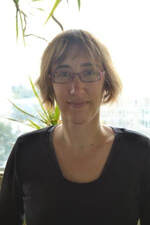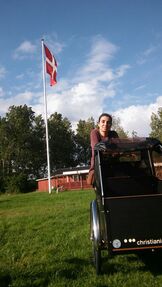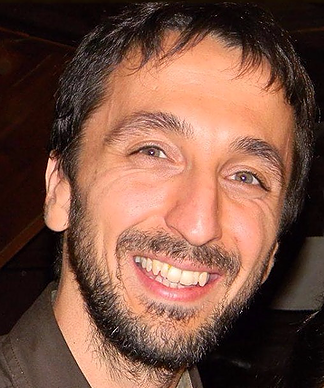Programme
Wednesday March 4
16:00-18:00 Workshops.
Effective scientific presentations, Sala Arriaga, Bizkaia Aretoa building, Bilbao
Taxonomic identification of main bee groups, Room 0.45, Faculty of Sciences, Basque Country University, Leioa
Thursday March 5
All talks will take place at Baroja auditorium, Bizkaia Aretoa, Bilbao
09:00-09:15 Welcome and Introduction
09:15-10:00: Elisa Thébault
K.1 The structure of plant-pollinator communities in response to global change
Session 1: Chair Ainhoa Magrach
10:00-10:15: Sailee Sakhalkar
O.1 Robbers, thieves and pollinators - the role of visitor behaviour in pollination networks in the Afrotropical rainforests of Mount Cameroon
10:15-10:30: Nicola Tommasi VIDEOCONFERENCE
O.2 Exploring plant-pollinator interactions in sub-saharan Africa agroecosystems
10:30-10:45: Lorenzo Guzzetti VIDEOCONFERENCE
O.3 Nectar sugar composition is partly influenced by land use management: a case-study from Italy
10:45-11:00: Paolo Biella VIDEOCONFERENCE
O.4 Are real plant-pollinator networks stable against an empirical attack tolerance test?
11:00-11:15: Maria Hurtado de Mendoza
O.5 Effects of species features in networks and competitive interactions outcomes in plant diversity maintenance
11:15-12:00: Coffee break, Laboa room
Session 2: Chair Asun Rodríguez
12:00-12:15: Catarina Siopa
O.6 Is selfing a reproductive assurance promoting polyploid establishment? Reduced fitness, leaky self-incompatibility and lower inbreeding depression in neotetraploids
12:15-12:30: Mohamed Abdelaziz
O.7 Is selfing an evolutionary dead end? The evolution of an outcrossing species in a selfing clade
12:30-12:45: Myles Fenske1
O.8 A nocturnal plant-pollinator interaction is regulated by two circadian clocks
12:45-13:00: Jakub Štenc
O.9 How do pollinators respond to contact with plants infected by anther smuts?
13:00-15:00: Lunch break
15:00-15:45: Lucas Garibaldi
K.2 Landscapes that work for bees and agriculture
Session 3: Chair David García Callejas
15:45-16:00: Daniel Montoya
O.10 Biodiversity and the stability of crop pollination in intensive farming systems
16:00-16:15: Maxime Eeraerts VIDEOCONFERENCE
O.11 Fruit orchards and semi-natural habitat provide complementary resources for pollinators in agricultural landscapes
16:15-16:30: Jose B. Lanuza
O.12 Recipient and donor characteristics govern the hierarchical structure of heterospecific pollen competition networks
16:30-16:45: Poster flash presentations
Emiliano Pioltelli VIDEO
P.1 How pollination-networks and individual functional traits vary along a gradient of increasing urbanization?
Giorgia Valente VIDEO
P.2 Impact of isolation and habitat size on plant-pollinator networks in the Faafu Maldivian Atoll
Amibeth Thompson
P.3 The attractiveness of oilseed rape in a plant-pollinator network
Maurizio Iovane
P.4 FiberNect: a fiber-optic refractometer for monitoring changes in nectar sugar concentration within flowers
Eva Matoušková
P.5 Pattern and drivers of pollinator foraging behavior on small spatial scales
Melanie Kirby
P.6 From Bloom to Boom: An Investigation of Monarda fistulosa var. menthifolia for pollinator health and human wellness
Laura Riggi
P.7 Effect of mass flowering crops on bumblebee communities in wild flower edges
Andrés Romero-Bravo
P.8 Effects of polyploidy and reproductive strategies on resource allocation and plant-insect interactions
Ana García-Muñoz
P.9 Ploidy level and its relationship with phenotypic variation, reproductive strategies and fitness in Erysimum incanum species complex
Melany Kirby podcast.
16:45-17:45 Coffee break and poster session (P1-P11), Laboa room
20:00 Conference dinner
Friday March 6
09:00-09:45: Ana Mª Martín González
K.3 Spatio-temporal dynamics in plant-pollinator interactions
Session 4: Chair Daniel Montoya
09:45-10:00: Marcos Méndez
O.13 Is floral longevity depending on flower size, climate or phylogeny?
10:00-10:15: Giovanna Aronne
O.14 Seed release strategy of Primula palinuri: an endangered species of the Mediterranean coastal cliffs
10:15-10:30: Živa Fišer
O. 15 Is lack of pollinators responsible for a low seed set in marginal populations of Daphne blagayana?
10:30-10:45: Fernando Ojeda
O. 16 Diversity and singularity of pollinating insects in the Mediterranean heathland or Herriza from the Strait of Gibraltar region (project POLINHER; Fundación Biodiversidad)
10:45-11:00: Pau Colom
O.17 Effects of abandonament and restoration in Mediterranean meadows on a long-term monitored butterfly-plant network.
11:00-11:15: Joanna Zhang
O.18 Wild again: rapid evolution and ecological interaction in feral almonds
11:15-12:00: Coffee break, Laboa room
12:00-13:00: Ignasi Bartomeus
O.19 Bee conservation, from theory to action. Open debate.
13:00-15:00: Lunch break
Session 5: Chair Miguel Angel Collado
15:00-15:15: Jan Klečka
O. 20 Individual-level specialisation and interspecific resource partitioning in solitary bees revealed by pollen DNA metabarcoding
15:15-15:30: Raquel Muñoz-Gallego
O. 21 Alien species disrupt interactions between the Mediterranean dwarf palm and its pollinators
15:30-15:45: Miguel Capó
O.22 Reproductive ecology of the threatened orchid Anacamptis robusta: habitat disturbances and interactions with coflowering rewarding species
15:45-16:00: Marta Barberis
O. 23 Does nectar composition induce a preference for functionally different floral stages in generalist vs specialist bees?
16:00-17:00: Coffee break and poster session (P12-P22), Laboa room
17:00-17:15: Farewell, Next Ecoflor 2021, Bizkaia Aretoa, Laboa room
Wednesday March 4
16:00-18:00 Workshops.
Effective scientific presentations, Sala Arriaga, Bizkaia Aretoa building, Bilbao
Taxonomic identification of main bee groups, Room 0.45, Faculty of Sciences, Basque Country University, Leioa
Thursday March 5
All talks will take place at Baroja auditorium, Bizkaia Aretoa, Bilbao
09:00-09:15 Welcome and Introduction
09:15-10:00: Elisa Thébault
K.1 The structure of plant-pollinator communities in response to global change
Session 1: Chair Ainhoa Magrach
10:00-10:15: Sailee Sakhalkar
O.1 Robbers, thieves and pollinators - the role of visitor behaviour in pollination networks in the Afrotropical rainforests of Mount Cameroon
10:15-10:30: Nicola Tommasi VIDEOCONFERENCE
O.2 Exploring plant-pollinator interactions in sub-saharan Africa agroecosystems
10:30-10:45: Lorenzo Guzzetti VIDEOCONFERENCE
O.3 Nectar sugar composition is partly influenced by land use management: a case-study from Italy
10:45-11:00: Paolo Biella VIDEOCONFERENCE
O.4 Are real plant-pollinator networks stable against an empirical attack tolerance test?
11:00-11:15: Maria Hurtado de Mendoza
O.5 Effects of species features in networks and competitive interactions outcomes in plant diversity maintenance
11:15-12:00: Coffee break, Laboa room
Session 2: Chair Asun Rodríguez
12:00-12:15: Catarina Siopa
O.6 Is selfing a reproductive assurance promoting polyploid establishment? Reduced fitness, leaky self-incompatibility and lower inbreeding depression in neotetraploids
12:15-12:30: Mohamed Abdelaziz
O.7 Is selfing an evolutionary dead end? The evolution of an outcrossing species in a selfing clade
12:30-12:45: Myles Fenske1
O.8 A nocturnal plant-pollinator interaction is regulated by two circadian clocks
12:45-13:00: Jakub Štenc
O.9 How do pollinators respond to contact with plants infected by anther smuts?
13:00-15:00: Lunch break
15:00-15:45: Lucas Garibaldi
K.2 Landscapes that work for bees and agriculture
Session 3: Chair David García Callejas
15:45-16:00: Daniel Montoya
O.10 Biodiversity and the stability of crop pollination in intensive farming systems
16:00-16:15: Maxime Eeraerts VIDEOCONFERENCE
O.11 Fruit orchards and semi-natural habitat provide complementary resources for pollinators in agricultural landscapes
16:15-16:30: Jose B. Lanuza
O.12 Recipient and donor characteristics govern the hierarchical structure of heterospecific pollen competition networks
16:30-16:45: Poster flash presentations
Emiliano Pioltelli VIDEO
P.1 How pollination-networks and individual functional traits vary along a gradient of increasing urbanization?
Giorgia Valente VIDEO
P.2 Impact of isolation and habitat size on plant-pollinator networks in the Faafu Maldivian Atoll
Amibeth Thompson
P.3 The attractiveness of oilseed rape in a plant-pollinator network
Maurizio Iovane
P.4 FiberNect: a fiber-optic refractometer for monitoring changes in nectar sugar concentration within flowers
Eva Matoušková
P.5 Pattern and drivers of pollinator foraging behavior on small spatial scales
Melanie Kirby
P.6 From Bloom to Boom: An Investigation of Monarda fistulosa var. menthifolia for pollinator health and human wellness
Laura Riggi
P.7 Effect of mass flowering crops on bumblebee communities in wild flower edges
Andrés Romero-Bravo
P.8 Effects of polyploidy and reproductive strategies on resource allocation and plant-insect interactions
Ana García-Muñoz
P.9 Ploidy level and its relationship with phenotypic variation, reproductive strategies and fitness in Erysimum incanum species complex
Melany Kirby podcast.
16:45-17:45 Coffee break and poster session (P1-P11), Laboa room
20:00 Conference dinner
Friday March 6
09:00-09:45: Ana Mª Martín González
K.3 Spatio-temporal dynamics in plant-pollinator interactions
Session 4: Chair Daniel Montoya
09:45-10:00: Marcos Méndez
O.13 Is floral longevity depending on flower size, climate or phylogeny?
10:00-10:15: Giovanna Aronne
O.14 Seed release strategy of Primula palinuri: an endangered species of the Mediterranean coastal cliffs
10:15-10:30: Živa Fišer
O. 15 Is lack of pollinators responsible for a low seed set in marginal populations of Daphne blagayana?
10:30-10:45: Fernando Ojeda
O. 16 Diversity and singularity of pollinating insects in the Mediterranean heathland or Herriza from the Strait of Gibraltar region (project POLINHER; Fundación Biodiversidad)
10:45-11:00: Pau Colom
O.17 Effects of abandonament and restoration in Mediterranean meadows on a long-term monitored butterfly-plant network.
11:00-11:15: Joanna Zhang
O.18 Wild again: rapid evolution and ecological interaction in feral almonds
11:15-12:00: Coffee break, Laboa room
12:00-13:00: Ignasi Bartomeus
O.19 Bee conservation, from theory to action. Open debate.
13:00-15:00: Lunch break
Session 5: Chair Miguel Angel Collado
15:00-15:15: Jan Klečka
O. 20 Individual-level specialisation and interspecific resource partitioning in solitary bees revealed by pollen DNA metabarcoding
15:15-15:30: Raquel Muñoz-Gallego
O. 21 Alien species disrupt interactions between the Mediterranean dwarf palm and its pollinators
15:30-15:45: Miguel Capó
O.22 Reproductive ecology of the threatened orchid Anacamptis robusta: habitat disturbances and interactions with coflowering rewarding species
15:45-16:00: Marta Barberis
O. 23 Does nectar composition induce a preference for functionally different floral stages in generalist vs specialist bees?
16:00-17:00: Coffee break and poster session (P12-P22), Laboa room
17:00-17:15: Farewell, Next Ecoflor 2021, Bizkaia Aretoa, Laboa room
Keynote speakers
|
Elisa Thébault
Centre National de Recherche Scientifique (CNRS), France The structure of plant-pollinator communities in response to global change Despite evidence that climate warming shifts pollinator phenologies, a lack of general assessment for these shifts has hampered exploring the consequences of climate warming on the seasonal structure of pollinator assemblages and on the functioning of plant-pollinator networks. To investigate these issues, we combine the analysis of occurrence data of more than 2000 flower visitor species across Europe and models of the dynamics of plant-pollinator networks. Our results show an average advancement and a shortening of pollinator phenologies across Europe over the years, which also depends on species evolutionary history, seasonal earliness as well as latitude. We show that these shifts have likely altered the seasonal distribution of pollination function by decreasing overlap among pollinators’ phenologies within European assemblages, except in the most northeastern part of Europe. Such changes in overlap between pollinators’ phenologies are expected to decrease the functional redundancy and complementarity of pollinator assemblages and might alter the robustness of plant-pollinator networks to ongoing pollinator extinctions. |
|
Ana María Martín González
Pacific Ecoinformatics and Computational Ecology Lab, Berkeley, CA, USA Spatio-temporal dynamics in plant-pollinator interactions Plant-pollinator interactions vary in space and time, yet we tend to study them as static and consistent. Unless we account for such dynamics when gathering and analyzing interaction data, we will not have a deep understanding of the ecological and evolutionary processes that structure these systems, limiting our capacity to forecast species responses to perturbations. I will give an overview of the current knowledge on spatio-temporal dynamics of pollination communities – providing examples from different systems – and of new methods and frameworks that explicity account for such. |
|
Lucas Garibaldi
Universidad Nacional de Rio Negro, Argentina Landscapes that work for bees and agriculture Ecological intensification aims to increase crop productivity by enhancing biodiversity and associated ecosystem services, while minimizing the use of synthetic inputs and cropland expansion. Policies to promote ecological intensification have emerged in different countries, but they are still scarce and vary widely across regions. Here, we propose ten policy targets that governments can follow for ecological intensification. |



